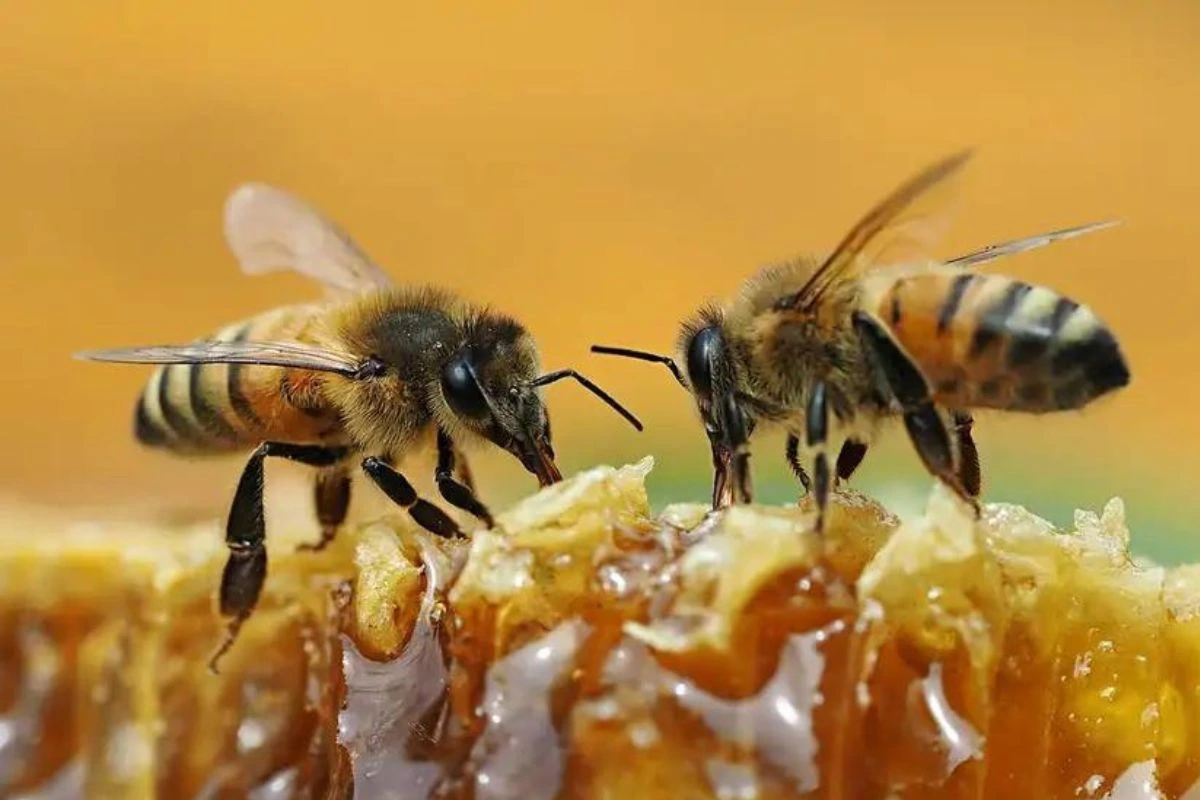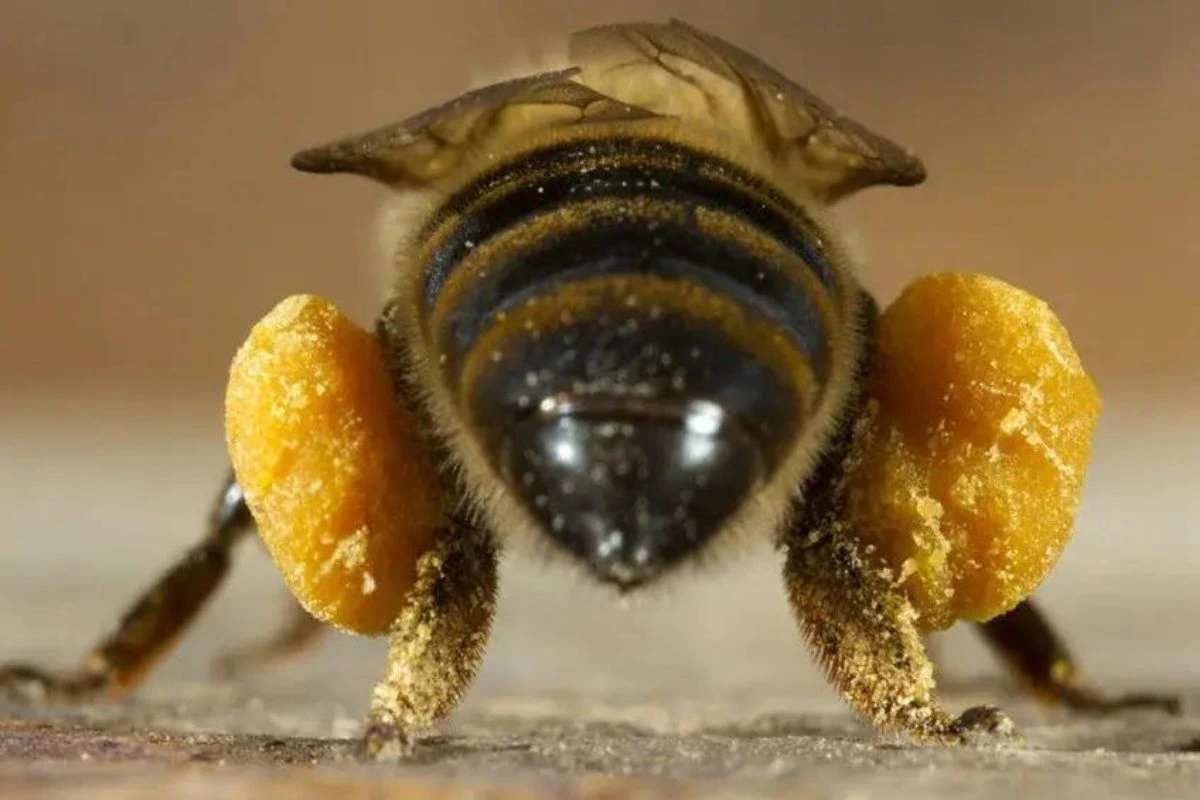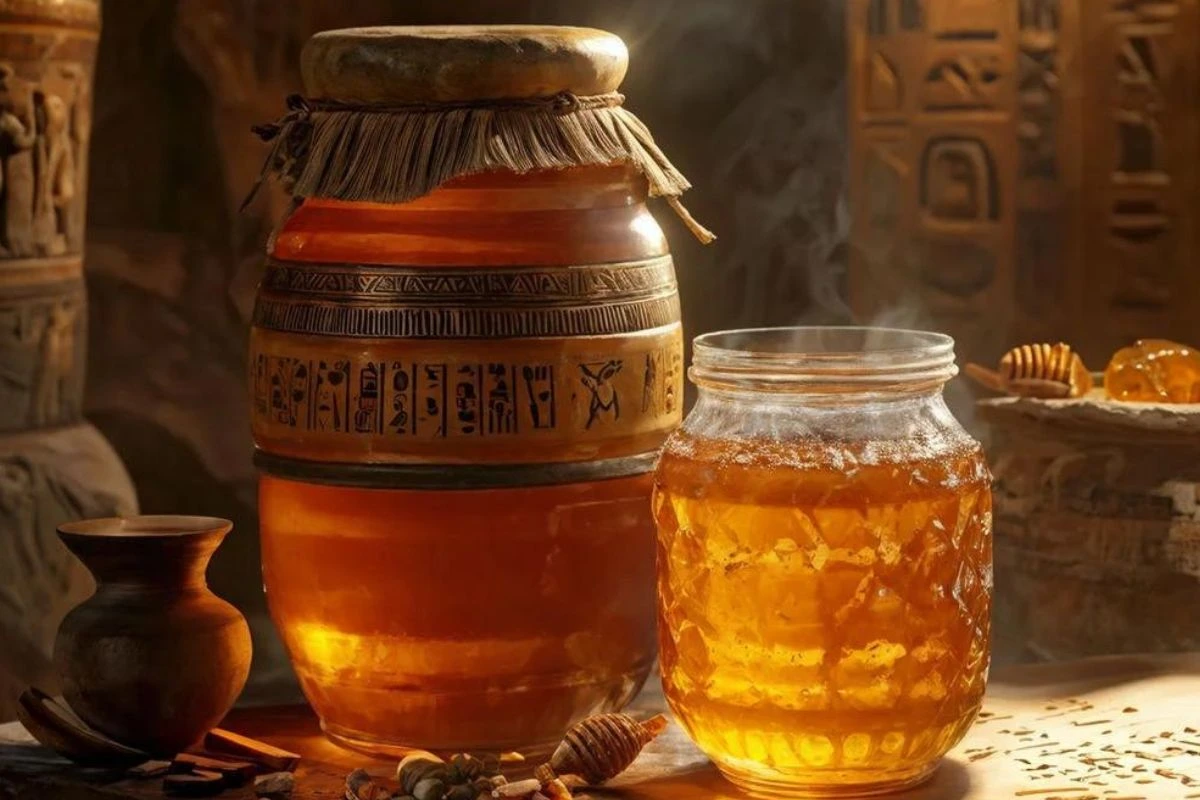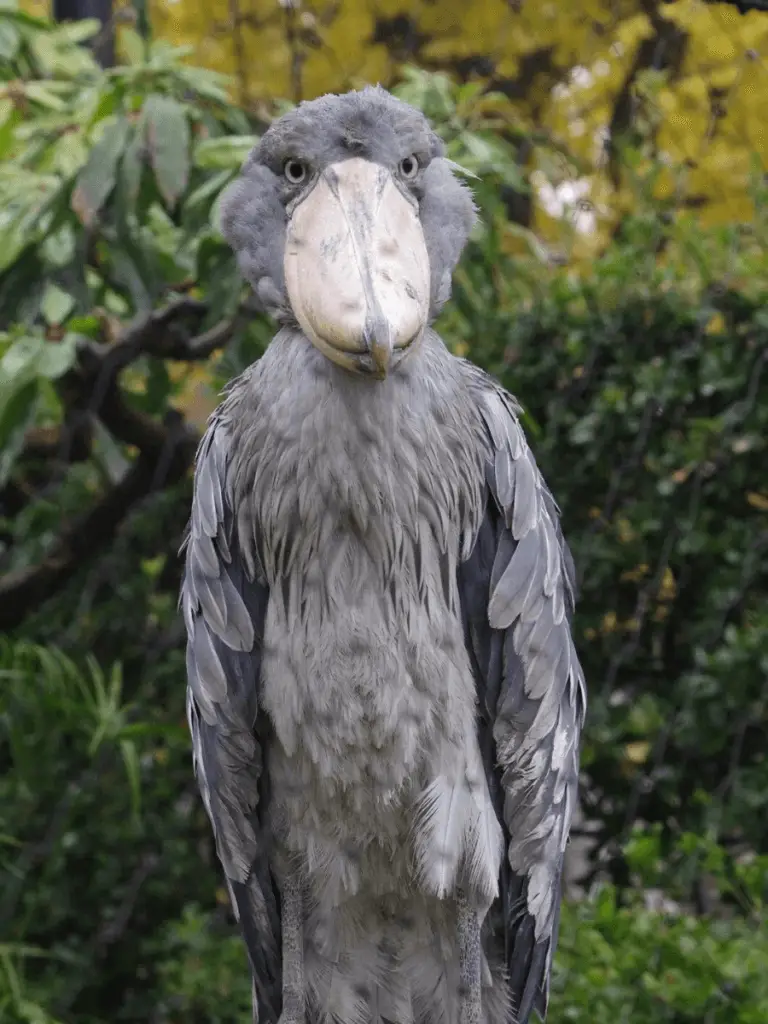Bees are some of the most remarkable creatures on Earth, that are essential to our ecosystems and everyday life. These small but powerful insects help pollinate most of the plants we depend on for food and aesthetics. However, bees have much more to offer than what we see. They have intricate social systems, special ways of communicating, a strong work ethic, and they play an important role in the environment. In this article, we’ll explore 22 interesting facts about bees that showcase their remarkable skills and the important part they play in our world.

1. Global Bee Diversity
There are more than 20,000 types of bees around the world, highlighting a wide variety that goes beyond the well-known honeybee. These types of bees include the hardworking honeybee, which makes honey and helps pollinate plants, as well as small stingless bees that are excellent pollinators despite their size. There are also solitary bees, such as the mason bee, which like to live and work by themselves, building their nests in natural spaces or tiny openings. Every species has its own important role in nature, helping to maintain the delicate balance of the ecosystem.
2. Super Pollinators
Bees play a vital role in pollination, helping to pollinate around 75% of the world’s flowering plants. This important task aids in the reproduction of many plant species, which are key to our ecosystems. Their role in agriculture is even more critical, as bees pollinate almost one-third of the food we eat, such as fruits, vegetables, nuts, and seeds. Their efforts guarantee the variety and availability of the foods we depend on, making them essential for both nature and human survival.

3. The Waggle Dance
Honeybees perform an incredible “waggle dance” when communicating with their hive mates. This intricate dance informs the other bees about the direction and distance of a certain food source, like nectar or pollen, away from the hive. With each movement and angle made, the dancing bee gives other bees a map that guides directly to the food source. The duration of the waggle and the angle relative to the sun tells fellow bees in which direction to fly with pin-point accuracy, an example of complex social behavior among honeybees.

4.The Reign of Queen Bee
A queen bee is the prolific matriarch of the hive. She lays up to 2,000 eggs on a single day. This amazing reproductive ability helps keep the hive strong and healthy. By laying eggs regularly, the queen helps maintain the colony’s numbers, replacing older worker bees and aiding in the hive’s expansion. Her high egg production shows how important she is for the survival and success of the bee colony.
5. Lifespan Variation
Worker bees typically live for around 6 weeks, especially during the active summer season. In this short time, they take on important jobs like gathering food, looking after the queen’s young, and keeping the hive in order. On the other hand, the queen bee, whose main job is to lay eggs, can live for as long as 5 years. This big difference in lifespan shows the different roles in the hive, with the queen’s longer life helping to maintain stability and continuity for the colony.
6. Single Sting Sacrifice
Honeybees can sting only one time because their stingers have barbs that get stuck in the skin of whatever they sting. When a honeybee stings, the barbs make it hard to pull the stinger out, which tears it from the bee’s body. This leads to the bee dying soon after it stings. This self-sacrificing act is a way to defend the hive from danger, even though it costs the bee its life.
7. Hexagonal Perfection
Bees build their hives with hexagonal cells, which are very efficient and useful. The hexagonal shape is not only aesthetically pleasing but also provides maximum structural strength and storage capacity with minimal use of wax. This design helps bees fit more cells in a small area, optimizing their hive and saving materials. The effectiveness of hexagonal cells has also influenced human engineers and architects, who see the benefits of this shape for creating strong and resource saving buildings.
8. Royal Jelly
Future queen bees are given only royal jelly, a nutrient-rich food made by worker bees. This special diet is essential for their development into queens. Royal jelly is full of proteins, vitamins, and hormones that help them grow quickly and develop their reproductive abilities. In contrast to worker bees, which eat a mixed diet, these larvae eat royal jelly all the time, allowing them to become fertile queens that can lay thousands of eggs and support the hive’s population. This unique diet guarantees that the future queen gets the nutrients she needs to perform her important role in the colony.
9. Ultraviolet Vision
Bees have the extraordinary ability to see ultraviolet (UV) light, which helps them find food more easily. Bees can see ultraviolet (UV) light, which helps them find food more easily. Many flowers have UV patterns on their petals that humans cannot see, but these patterns help guide bees. These guides show bees where to find the most nectar and pollen. By spotting these UV signs, bees can quickly find the food they need, improving their pollination work and supporting the health of the plants they visit.
10. Buzz Pollination
Some bees, like bumblebees, use an interesting method called buzz pollination. They shake their bodies quickly while holding onto a flower, creating a buzzing sound that helps release tightly packed pollen. This technique works well for flowers with hard-to-reach pollen. Buzz pollination makes pollen transfer more effective, helping the bees gather pollen for their hives and the plants get better pollination and fertilization.
11. Honey Preservation
Honey is renowned for its remarkable longevity, largely because of its unique composition. It has low moisture and an acidic pH, which makes it hard for bacteria and germs to grow. As a result, honey can last indefinitely without spoiling. Archaeologists have discovered pots of honey in ancient Egyptian tombs that are over 3,000 years old and still perfectly edible. This incredible preservation ability shows natural resilience of honey and has made it a valuable substance throughout history, both as a food and for its medicinal properties.

12. Temperature Regulation
Bees carefully control the temperature in their hive, keeping it steady at 93°F (34°C). This is important for their larvae’s growth and the health of the hive. They use two main methods: fanning their wings and clustering together.
Fanning is when worker bees flap their wings to create airflow, which helps cool the hive by evaporating extra moisture.
Clustering is when bees gather closely to generate heat, especially in colder weather, by vibrating their muscles to create warmth. This careful temperature management helps the hive stay stable for the colony’s survival and productivity.
13. Diverse Diets
Not all bee species make honey. While honeybees are known for making and storing honey, other types of bees, such as bumblebees and carpenter bees, do not do this. Bumblebees and carpenter bees collect nectar and pollen primarily for their own immediate use rather than for long-term storage.
Bumblebees collect nectar and pollen to feed their young and to keep themselves nourished while they are active. However, they do not create honey like honeybees. Instead, they store nectar in their nests in a simpler form, using it quickly as needed.
Carpenter bees also gather nectar and pollen, but they mainly use it to feed their young. They do not store honey and their nesting behavior is different from that of honeybees, focusing on individual nests instead of large communal hives.
14. Communication Through Scent
Bees depend on pheromones to communicate inside the hive. These chemical signals help them work together and keep the hive united.
When a bee senses danger, it releases alarm pheromones that prompt other bees to prepare for defense, helping the colony protect itself.
Pheromones also attract bees to certain locations or resources, like a plentiful nectar source. For example, when foraging bees find a good food spot, they use pheromones to bring more workers to collect nectar or pollen.
Additionally, bees use pheromones to mark flowers they have visited, letting other bees know about the flower’s quality and availability. This reduces competition and makes foraging more efficient.
15. Male Drones
Male bees, called drones, have a unique job in the hive. Unlike worker bees, drones do not gather nectar or pollen. Their main role is to mate with a queen. Drones are bigger than worker bees and have larger eyes, which help them during mating flights.
In the mating season, drones leave the hive to find queens from other colonies. Mating happens in the air, and the drone’s only goal is to fertilize the queen’s eggs. After mating, drones usually die because they have used all their energy for reproduction. While they are important for keeping genetic variety in bee populations, they do not help with the daily work in the hive.
16. Color Preferences
Bees are especially attracted to flowers that are blue, purple, and violet. These colors usually mean rich source of nectar. Bees can see ultraviolet light, which helps them to detect patterns and colors that humans cannot see. Many flowers in these colors have ultraviolet markings that guide bees to where the nectar is. This natural signal helps bees find food easily and also helps with pollination by moving pollen from one flower to another.

17. Amazing Memory Skill
Bees have amazing memory skills that help them remember where flowers and their hive are located. They find their way by using visual cues, patterns, and smells in their surroundings.
Bees can remember the specific locations of flowers and their nectar availability, often returning to the same flowers repeatedly. They use visual signs like the shape and color of the flowers, along with their sense of smell.
In addition, bees have excellent spatial memory, which helps them find their way back to the hive after collecting food. They remember landmarks and use the sun’s position to guide them, even when traveling long distances.
18. Older Bees
In the later stages of their lives, some older bees show an interesting behavior: they do not return to the hive in the evening. Instead, they spend the night on flowers or in nearby spots. This is believed to be a natural adaptation to minimize the burden on the hive. As bees age, their primary duties shift from foraging and hive maintenance to a more relaxed role. By staying outside, they make sure they don’t consume resources or disrupt the hive’s main activities.
If they make it through the night and see another sunrise, they might still return to the hive to help out by bringing back any leftover nectar or pollen. This behavior shows the hive’s teamwork, where every bee has a part in supporting the colony until the end of its life.
19. Speedy Workers
Bees are remarkable flyers, able to fly at speeds of up to 15 miles per hour. This skill helps them travel up to five miles from their hive to find nectar and pollen. Their speed and endurance are important for effective foraging, allowing them to explore wide areas and reach various food sources. This ability not only meets their own needs but also boosts their role in pollination, benefiting the health and productivity of the plants they visit.
20. Symbiotic Relationships
Bees often form beneficial partnerships with plants, where both sides gain advantages. In this relationship, bees get food like nectar, which gives them important energy, and pollen, which provides proteins and fats needed for their growth and for feeding their young.
In return, plants benefit from the pollination that bees provide. As bees visit different flowers to gather nectar and pollen, they accidentally move pollen from one plant to another, aiding in fertilization and helping plants to reproduce.
This partnership is essential for healthy ecosystems, as it promotes plant variety and productivity while also supporting the survival and thriving of bee populations.
21. Social Structure
A typical honeybee colony is a well-structured community made up of three different types of bees, each with a specific role,
Queen Bee
There is one queen in the colony. Her primary function is to lay eggs, sometimes up to 2,000 each day during the peak season. The queen also produces pheromones that help regulate the hive’s activities and maintain social order.
Worker Bees
Most of the colony consists of female worker bees. They handle many tasks, such as gathering nectar and pollen, taking care of the queen’s eggs and larvae, cleaning the hive, and protecting the colony. Worker bees are not able to reproduce and usually live for about six weeks during the active summer period.
Drones
There are usually a few hundred male drones in the colony. Their primary job is to mate with the queen during her mating flights. Drones do not help with gathering nectar or maintaining the hive. However, they are important for ensuring genetic diversity in the bee population.
This division of tasks helps the hive run smoothly and survive, with each type of bee playing a vital role in the colony.

22. Flower ‘Beds’
Like all living things, honeybees sleep for about 5 to 8 hours at night. Sometimes, they get so tired from flying and working that they fall asleep right on flowers! They go through relaxed, light, and deep sleep stages and they become calm and still before falling asleep. Since bees lack eyelids, we won’t see them closing their eyes, but there are other signs that indicate they are sleeping.

When a bee sleeps, its body temperature decreases, and it enters a deep sleep that needs bright light to wake it up. This interesting behavior shows how important rest is for bees, as they are busy with tasks like foraging and pollination.
23. Economic Impact
Bee pollination is vital for global agriculture, adding billions of dollars to economies each year. Bees are essential for pollinating many crops, such as fruits, vegetables, nuts, and seeds. This important process helps create a wide variety of food, benefiting both local and global food systems.
The economic benefits of bee pollination go beyond just crop production; they also support jobs and industries related to farming and food. Without bees, many crops would produce less or fail altogether, which could lead to higher food prices and shortages. The significance of bee pollination highlights the need to protect these important insects to maintain agriculture and economic health worldwide.






I adopted 2 queen bees 🐝
HONEY AND HONEY DEW. If we don’t protect and help them survive, we won’t either.
Very informative & educational.